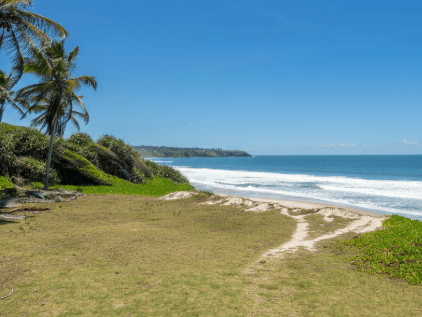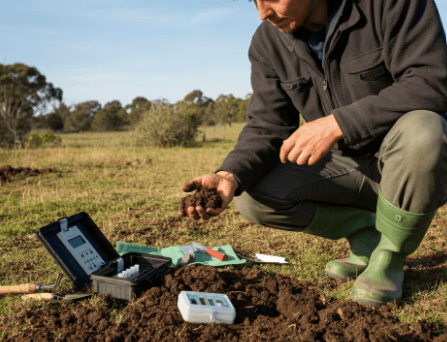Florida, with its warm climate, stunning beaches, and vibrant culture, is a dream destination for many looking to build their ideal home. However, choosing land to build in the Sunshine State requires careful consideration due to its unique geographical and environmental characteristics. From coastal properties to inland retreats, Florida offers a diverse range of options for prospective homeowners. Here’s a comprehensive guide to help you navigate the process of choosing land to build your home in Florida and what to watch out for…
Understand Florida’s Geographical Diversity when Choosing Land to Build
Florida is not just about beaches and palm trees; it boasts diverse landscapes, including coastal areas, marshlands, wetlands, forests, and rural farmland. Each region offers its own set of advantages and considerations.
Coastal properties provide access to beaches and water activities but may be prone to hurricanes and flooding. Inland properties offer more privacy and seclusion but may lack proximity to amenities and attractions.
There are two main factors you should be aware of when looking at topography in choosing the right land to build your home?
Insurance Costs
If you are nearby navigable water, close to the Gulf of Mexico or the Atlantic Ocean, you are more susceptible to higher insurance costs for both wind and flood once you construct your home. Our suggestion is to look at newer built homes that are on the market and reach out to those owners or listing agents to get an idea of costs prior to going into contact on land to build your home.
Choosing land to build in relationship to improved land ongoing costs can be widely different once constructed.
Mitigation Costs on Land to Build
We see mitigation costs really affect many future Florida residents. These properties can be located in wetland areas that have Golpher Turtles, Borrowing Owls, Scrub Jay Birds, etc. Many times, certain areas of the land cannot be built upon. In other cases, the removal of protected animals, purchasing mitigation credits, and filling land in low-lying areas can be extremely costly.
Consider Coastal vs. Inland Properties
If you’re drawn to Florida’s coastline, consider the pros and cons of coastal living. Coastal properties offer breathtaking views, access to navigable water ways via a boat, easy access to beaches, and a laid-back lifestyle. However, they are also more vulnerable to storm surges, erosion, and saltwater intrusion.

For example, the replacement of a seawall in your backyard on a canal can cost you as much as $500-1,000 per linear foot.
If you have a 100′ of water front, a seawall at $700 x 100′ = $70,000.
Choosing land to build on the water can be costly with other costs like boat docks as well.
Inland properties, on the other hand, provide greater stability, lower insurance costs, and more affordable land prices. Evaluate your priorities and weigh the trade-offs before making a decision.
Assess Flood Risk and Elevation
Florida is susceptible to flooding, particularly in low-lying coastal areas and floodplains. Before purchasing land, research its flood risk and elevation. Consult FEMA’s Flood Insurance Rate Maps (FIRMs) to determine if the property is located in a flood zone and assess the base flood elevation.
Over the years, flood insurance has increased significantly, especially since Hurricane Ian among others. Consider choosing land to build with higher elevations or properties that have been elevated on pilings or filled or fortified against flooding to minimize risk and insurance costs.
Research Environmental Regulations
Florida has stringent environmental regulations aimed at protecting its fragile ecosystems and natural resources. Familiarize yourself with zoning laws, building codes, wetland protection ordinances, and habitat conservation plans that may impact your building plans. Obtain necessary permits and approvals from local authorities before proceeding with construction to ensure compliance with environmental regulations.
As mentioned previously, the cost to mitigate this can be hefty. This is why having an environmental study done during your due diligence period can provide you with a lot of protection and maybe an opportunity for renegotiation.
Evaluate Soil Quality and Drainage
Soil quality and drainage are critical considerations when building in Florida. Sandy soils are common in many parts of the state and offer good drainage but may require additional stabilization for building foundations. Clay soils, prevalent in certain areas, may be prone to expansion and contraction, leading to foundation issues. Conduct soil tests to assess its suitability for construction and consider implementing proper drainage systems to prevent waterlogging and erosion.

Check for Deed Restrictions and HOA Regulations
Many residential developments in Florida are subject to deed restrictions and homeowners’ association (HOA) regulations governing property use, design standards, and maintenance requirements. Many times HOA’s will have minimum size restrictions, certain roof types and even certain paint colors.
Review the deed restrictions and HOA covenants before purchasing land to ensure they align with your preferences and lifestyle. Consider the impact of HOA fees and restrictions on your budget and freedom to customize your home. If you want the freedom to do what you want with your home, having an HOA may not be ideal for you in choosing land to build your dream home.
Account for Wind Exposure and Hurricane Resistance
Florida is prone to hurricanes and tropical storms, making wind resistance a crucial consideration for home construction. Evaluate the property’s exposure to prevailing winds and potential windborne debris. Choose building materials and construction techniques that meet or exceed Florida Building Code requirements for wind resistance and hurricane protection.
Consider investing in impact-resistant windows, reinforced roofing, and storm shutters to safeguard your home against extreme weather events. Keep in mind, most of these materials are added or higher costs as well.
Another thing to consider is if the property is in an area where evacuations are common. Evacuating an area of an upcoming storm can be an inconvenience as you can potentially be displaced during the storm and post-storm.
Many people who have experienced hurricane damage were displaced for months and even years. So choose your land to build wisely!
Research Utility Infrastructure and Services
Ensure that the land you choose has access to essential utility infrastructure such as electricity, water supply, sewage systems, and internet connectivity. Verify the availability and reliability of these services and factor in the costs of connections and hook-ups into your budget. In remote or rural areas, you may need to consider alternative options such as wells, septic systems, or off-grid utilities.
Access To The Florida Land To Build
Access to the actual parcel of land to build is vital. Some that have limited or no access can be costly and in some cases not possible to access such as land locked properties. In some areas, you may even be required or responsible for paving up to the front of your land. And asphalt isn’t cheap!
Engage with Local Experts and Professionals
Seek guidance from local real estate agents, land surveyors, engineers, architects, and environmental consultants who are familiar with the unique challenges and regulations governing land development in Florida. They can provide valuable insights, conduct site evaluations, and help you navigate the permitting process and due diligence requirements.
Upfront Costs in Choosing Land to Build in Florida
Keep in mind, you likely will have upfront costs while in contract on your land to build in Florida. This can include surveys and environments studies. This is money you usually will not get back if you decide to back out of the Florida Land Contract.
Depending on the size and scope of the project this can range from hundreds of dollars to tens of thousands of dollars.

Plan for Resilience and Sustainability
Building in Florida requires careful consideration of resilience and sustainability principles to mitigate climate risks and protect the environment. Incorporate energy-efficient design features, renewable energy sources, water conservation measures, and landscaping practices that enhance biodiversity and reduce environmental impact. Consider investing in resilient building materials and techniques to future-proof your home against climate change impacts.
In conclusion, choosing the perfect land to build your home in Florida requires thorough research, careful planning, and consideration of various factors, including geographical diversity, environmental regulations, flood risk, soil quality, wind resistance, utility infrastructure, and sustainability. By evaluating your priorities, engaging with local experts, and conducting due diligence, you can find the ideal piece of land that aligns with your vision, lifestyle, and values, ensuring a rewarding and sustainable homeownership experience in the Sunshine State.
Check out this Vacant Buyer’s Checklist next before choosing land to build your Florida Home!!
